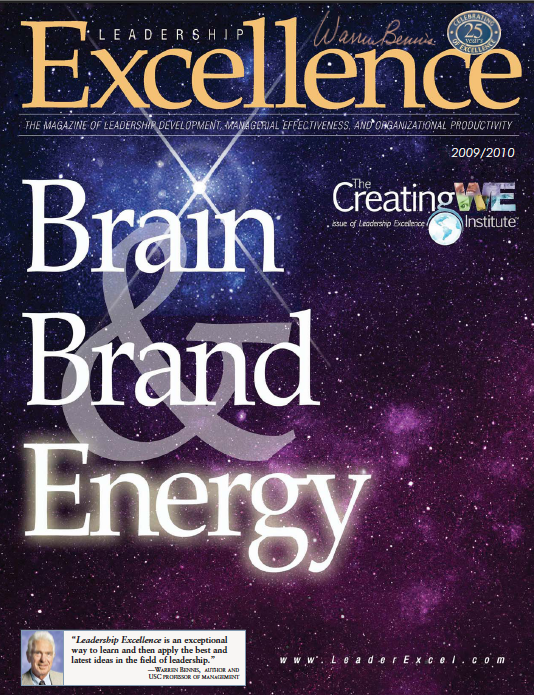By Judith E. Glaser | psychologytoday.com
Published: January 15, 2015
Twenty-eight years ago I began my first experiment in conversational intelligence. I was hired by Union Carbide to work with 17 high-powered sales executives who were in danger of losing a bid for a key contract. My job was to figure out how they could raise their game and beat the other seven competitors.
For two weeks I had them role-play potential conversations with "customers" and charted what they said. The patterns were clear: The executives used "telling statements" 85 percent of the time, leaving a paltry 15 percent for questions. And, almost all the questions they asked were actually statements in disguise. They were talking and talking, trying to bring their counterparts around to their point of view, all the time thinking that they were still conducting good, productive conversations.
Having observed thousands of executives in similar situations—from prospecting to performance reviews, business development to innovation—I know that this is a common problem. People often think they're talking to each other when they are really talking past each other. They carry on monologues, not dialogues.
There is a biological explanation for this: When we express ourselves, our bodies release a higher level of reward hormones, and we feel great. The more we talk, the better we feel. Our bodies start to crave that high, and we become blind to the conversational dynamics. While we're being rewarded, the people we're talking to might consciously or subconsciously feel cut off, invisible, unimportant, minimized and rejected, which releases the same neurochemicals as physical pain.
Feeling rejection sends them into a "fight/flight" response, releasing cortisol, which floods the system and shuts down the prefrontal cortex, or executive brain, letting the amygdala, or lower brain, take over. To compound conversational challenges, the brain disconnects every 12 to 18 seconds to evaluate and process, meaning we're often paying as much attention to our own thoughts as we are to other people's words.
In business, we must learn to master these natural impulses because clear two-way, empathetic, non-judgmental communication is critical for high functioning. It's how deals get done, projects get run, and profits get earned. That's why I now teach more executives, like those at Union Carbide, how to become more intelligent in conversations.
Stop and Start Exercises
To recognize your blind spots:
STOP underestimating your own propensity to have conversational blind spots. We all have them – it’s part of being human.
Identify which of these five common blind spots are yours:
- Blind Spot 1: This blind spot involves an assumption that others see what we see, feel what we feel, and think what we think.
- Blind Spot 2: The failure to realize that fear, trust, and distrust change how we see and interpret reality, and therefore how we talk about it.
- Blind Spot 3: An inability to stand in each other’s shoes when we are fearful or upset.
- Blind Spot 4: The assumption that we remember what others say, when we actually remember what we think about what others say.
- Blind Spot 5: The assumption that meaning resides in the speaker, when in fact it resides in the listener.
START...
- Paying attention to and minimizing the time you "own" the conversational space
- Sharing that space by asking open-ended discovery questions, to which you don't know the answers, so you stay curious (i.e., What influenced your thinking?)
- Listening to connect not judge or reject.
- Double-clicking on what others say to facilitate sharing and discovering and opening the space for deeper connection and relationship building. Double-Clicking mimics opening folders on your computer to drill down into details. This exercise enables each person to unlock the deeper connections by delving into their individual mindscapes to share and compare word meanings and perceptions with each other.
Through coaching, the Union Carbide sales team began to notice when they were making assumptions, interpreting reality incorrectly, and jumping to conclusions. They started asking discovery questions and paying close attention to their customers' answers, which expanded their frame of reference and gave them new insights into needs and opportunities. In doing so, the executives presented themselves as conversationally intelligent partners, not sales people. And, they won the contract!





